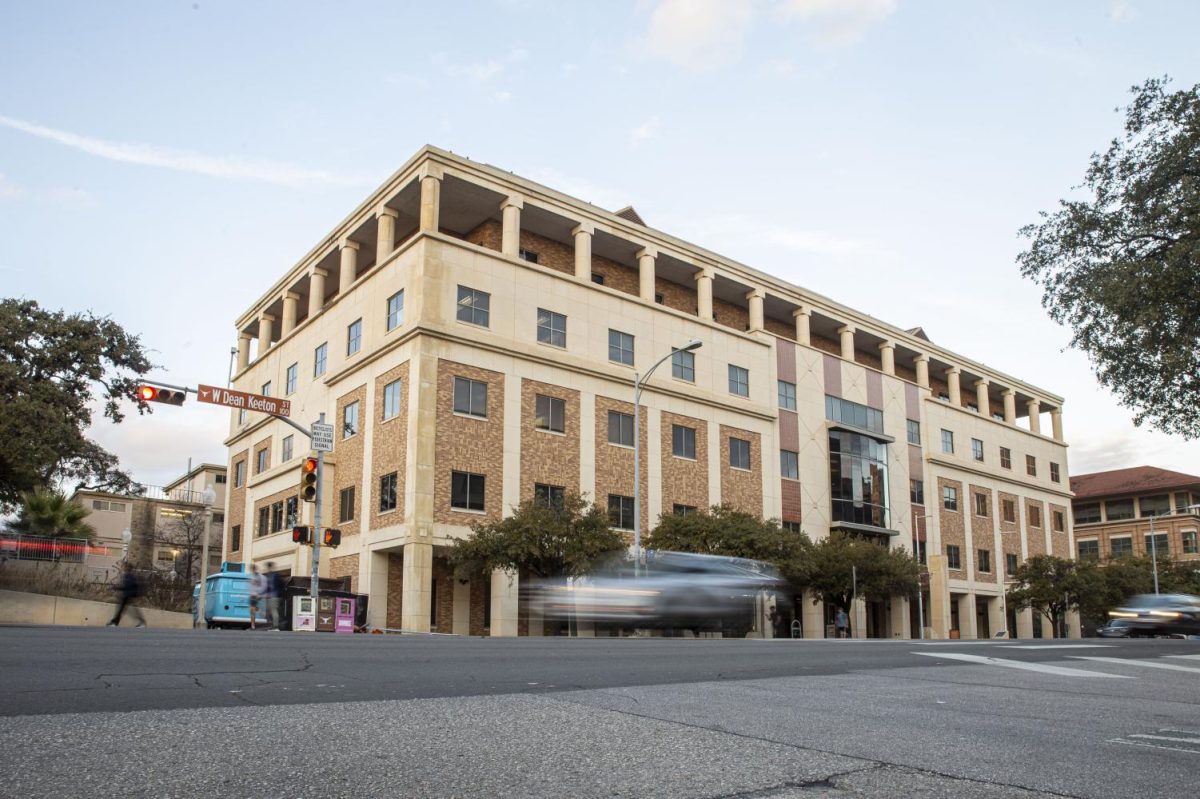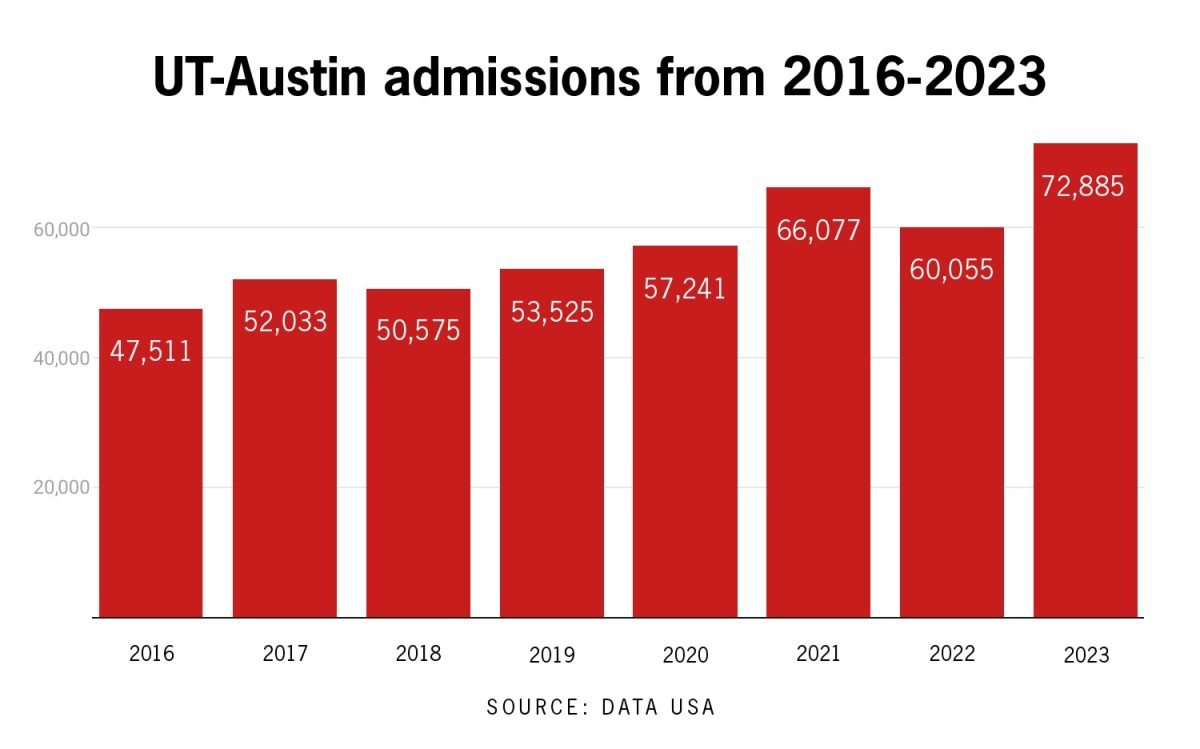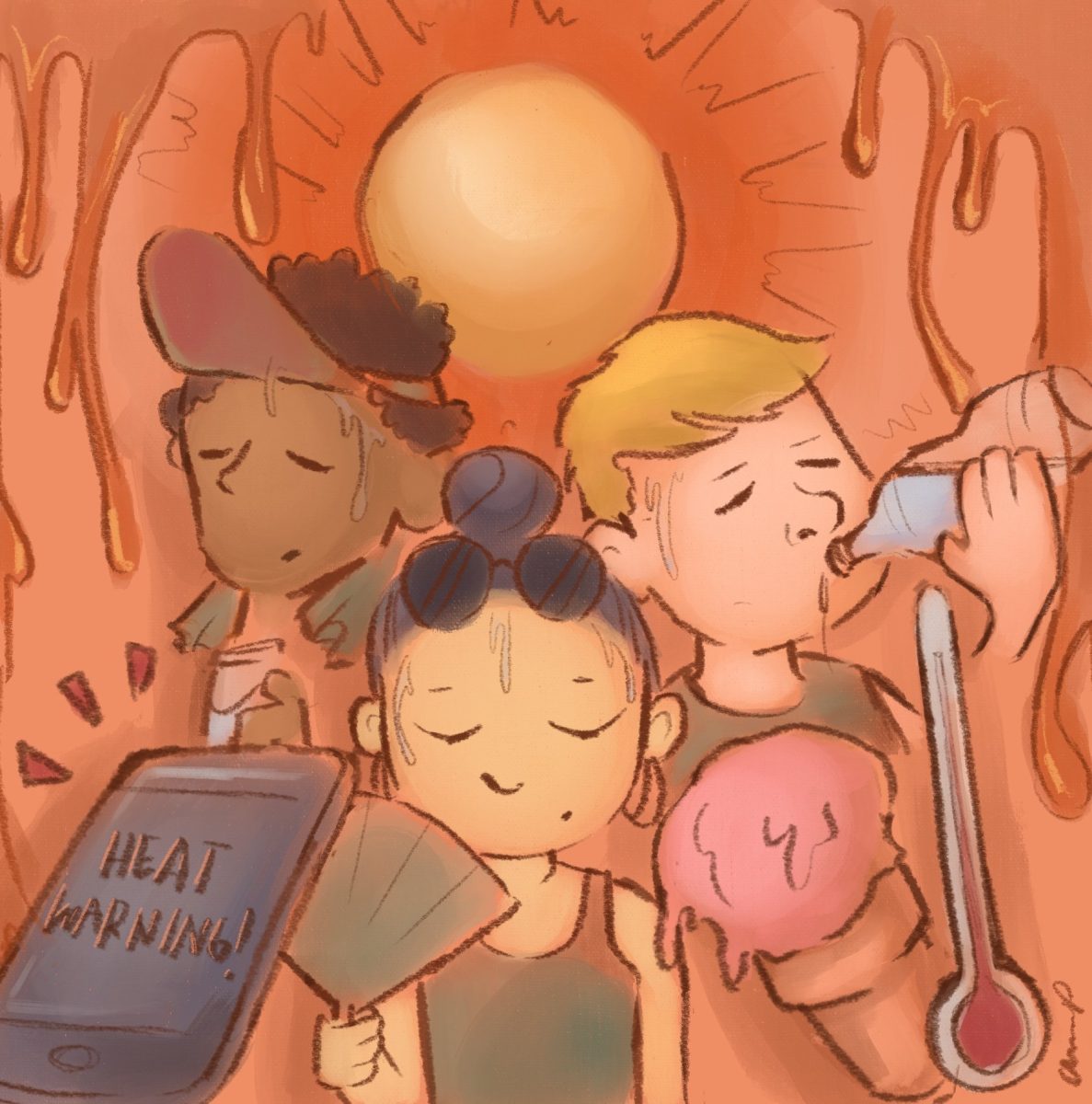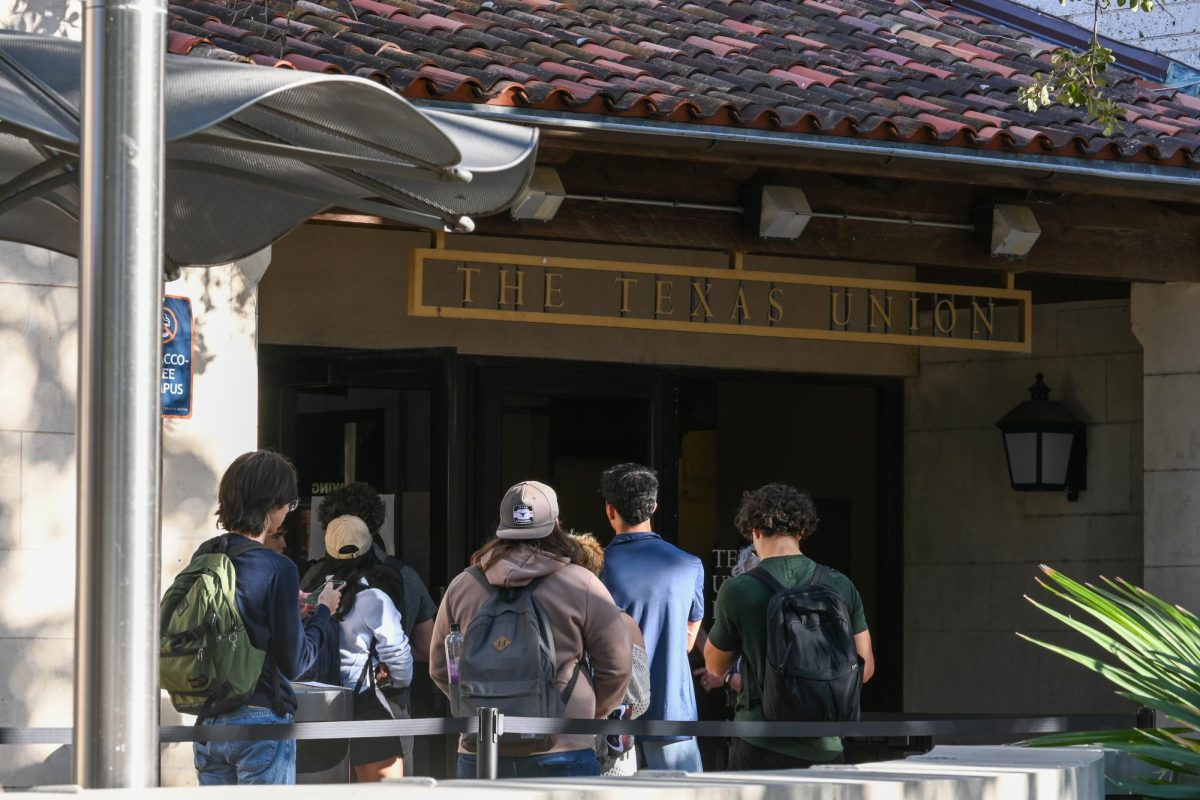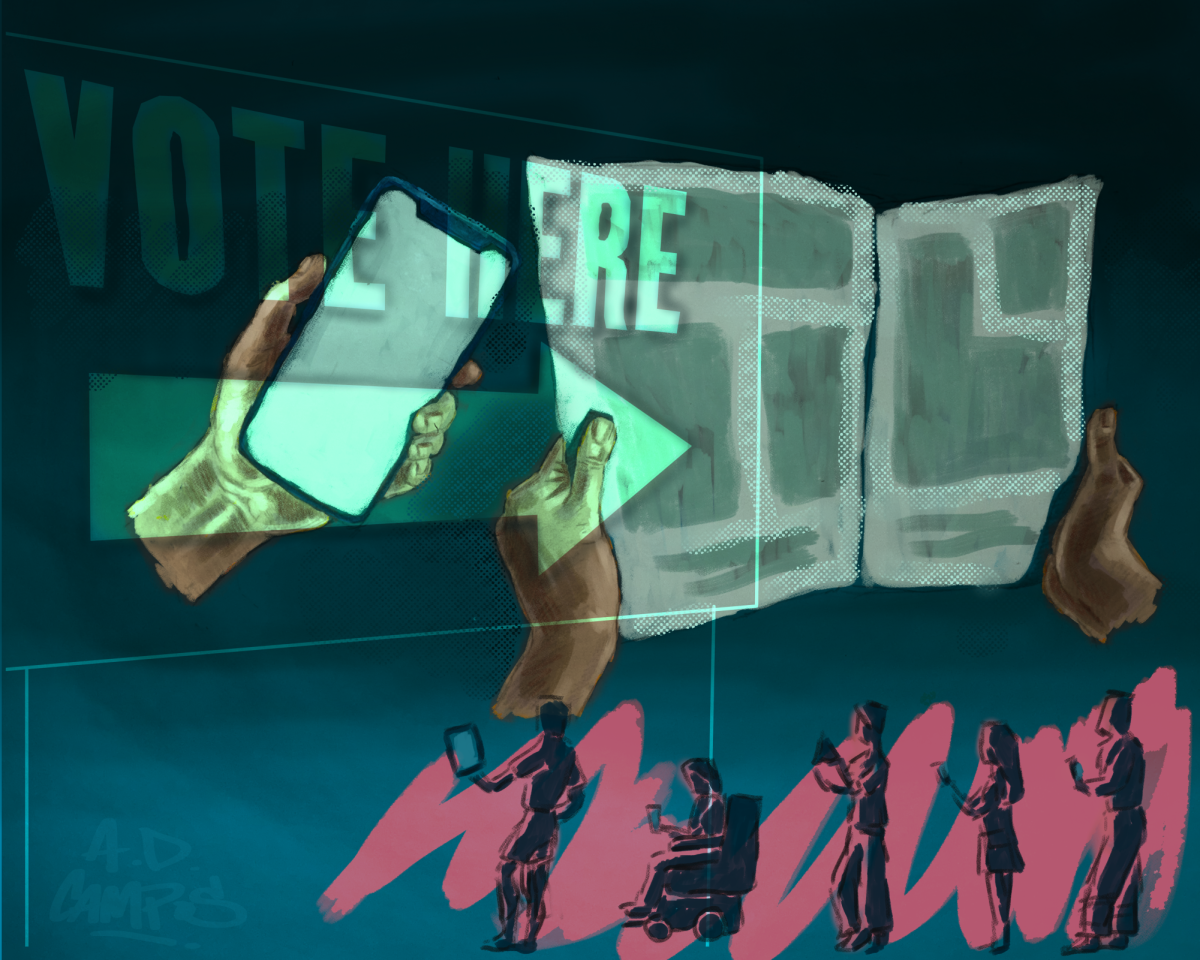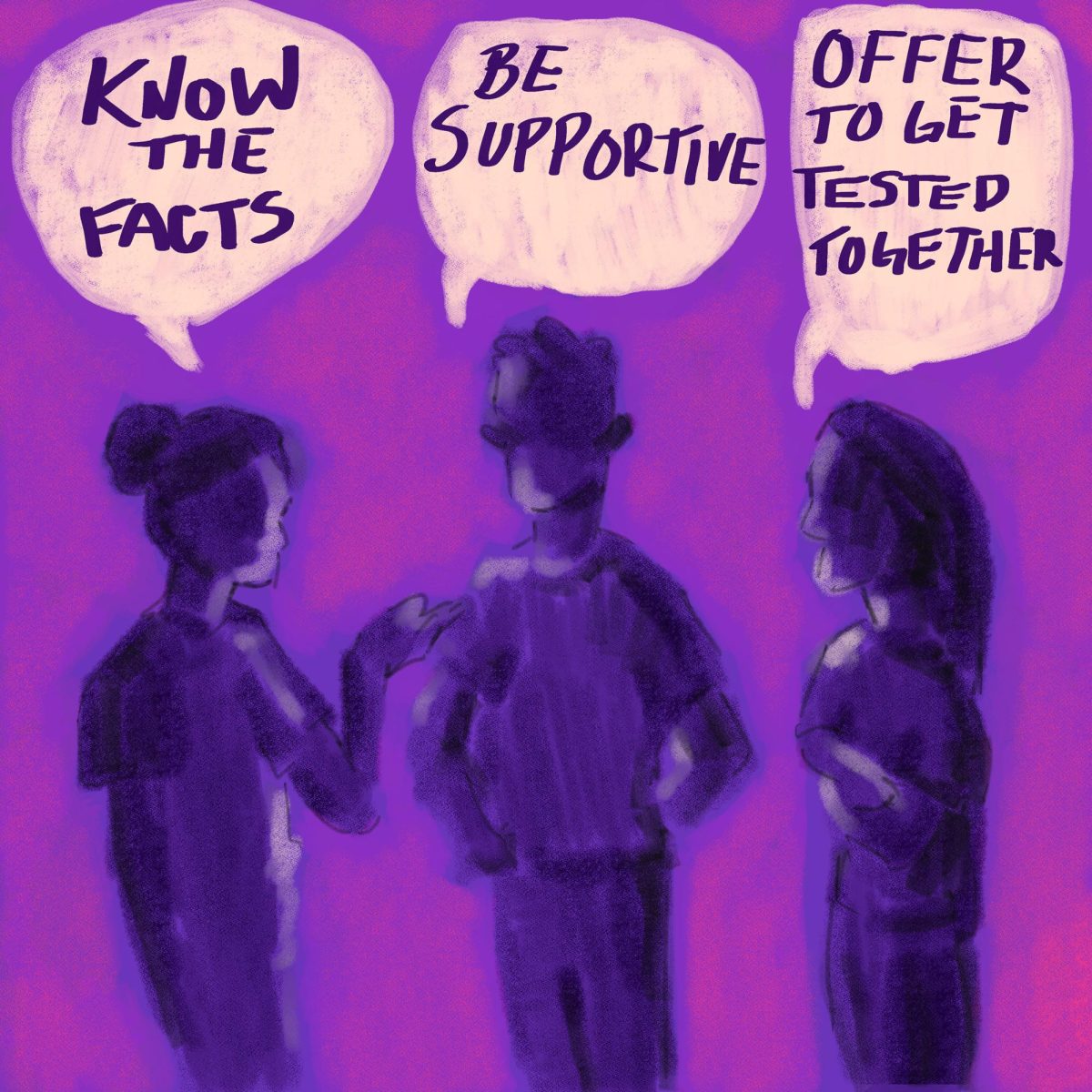While earning a graduate degree in social work, University of Texas alumna Hanna, who wished to be referred to by a nickname, began experiencing intense spikes in her heart rate and difficulty breathing.
Believing her physical health was the culprit, Hanna made an appointment with University Health Services to test for asthma. When results showed she was physically healthy, Hanna broke down in tears from not knowing the cause behind the debilitating symptoms she was experiencing.
Following further questioning, the medical provider recognized anxiety-related issues as the cause and referred Hanna to the University’s Integrated Health Program, a collaboration between University Health Services and the Counseling and Mental Health Center.
The CMHC’s free services, which are entirely subsidized by the University, address and remedy steadily increasing rates of anxiety, depression, stress and other issues seen in an ongoing global mental health crisis. According to the American College Health Association’s National College Health Assessment of UT, the number of students experiencing moderate psychological stress has doubled since 2019, while those experiencing severe psychological stress have also steadily grown.
“Things that contribute to those increases are a lot of increasing stress in our society, whether that’s financial stressors that students or others are under (or) the academic pressures that are really great,” said Chris Brownson, associate vice president for Health and Well-being.
Brownson said these issues and numbers are not unique to UT or even particularly tied to universities. Instead, they point to a broader mental health crisis, which Brownson said is due to the increasing severity of psychological issues and the lack of accessibility and mental health professionals to match the demand for treatment.
Marla Craig, the current executive director of the CMHC, said the center saw a 10% increase in demand for services every year from the late 2000s into the 2010s.
Brownson said the increase is likely due to the center’s accessibility, increased mental health awareness and the reduced stigma around receiving help among young people.
The increase in demand for services led to the restructuring of the center and more allocated funds from the University, Craig said, which now totals over $6 million a year according to a public information request.
“We were trying to meet that level of demand with the resources that we had,” Craig said. “Even to this day, in terms of creativity and innovation, (we ask ourselves) what services would we think would be helpful to our students.’”
With continuously growing student needs, Craig said the CMHC’s efforts to extend its reach and services began with providing more short-term treatment. The center expanded its care team and developed new programs — including the introduction of single sessions for students with brief problems, telehealth services and 24/7 support through TimelyCare and the creation of the CARE Program. The program, which stands for counselors and academic residents, places counselors at every college at the University.
“Making sure that our students have access all over campus to a counselor and that the faculty and staff advisors who work in that college also can consult with that counselor (is important),” Craig said.
Maria Timm, a psychologist and CARE Coordinator for the School of Law, said her office’s location within the school and her unique understanding of the college’s culture help her work with the law students who visit her daily.
“I go to faculty meetings, I go to staff meetings (and) I get referrals from staff,” Timm said.“The students know where I am and know that I understand how law school is structured.”
Timm also helps lead a CMHC-affiliated group designed to reduce stress and promote resilience through yoga. This, along with dozens of other CMHC-affiliated therapy and wellness groups, was another step in broadening the center’s services.
“Other students can be the most powerful supportive persons in a person’s life,” Craig said. “People learn from each other.”
After being referred to the University’s Integrated Health Program and beginning sessions with the CMHC, Hanna said her counselor recommended she attend a group session supporting survivors of family-related trauma.
“(Between) the individual counselor that I saw and the group therapy … I felt very supported all around,” Hanna said.
Hanna, who now works in mental health program evaluation, said she believes the CMHC is doing a fantastic job with its clinical services.
“I had a lot of work to do after those therapy sessions, but I left them feeling like they changed my life in a good way,” Hanna said. “The (only) downside that I very clearly remember (is) that there was a limit (of sessions) … and I was a little bit sad about that.”
The CMHC is no stranger to constructive criticism — for years, by word of mouth and through social media posts, individuals have complained of challenges with receiving a timely appointment, the number of appointments allotted and the quality of care they receive.
Craig said her office consistently attempts to address misconceptions regarding the CMHC and its services, including the lack of timely appointments and appointment limits.
“They can get an appointment right now; we have single sessions all the time,” Craig said. “We might have one later today or tomorrow, or we’ll be able to get them in (somewhere else) if it’s not within the Counseling Center.”
Petroleum engineering sophomore Shah Ahmed said he received a same-day crisis appointment back in November following personal and mental health-related concerns, and follow-up appointments were seamless to schedule. The center assisted him with receiving a diagnosis, managing it, registering for accommodations with the Disability and Access office and finding referrals for further care outside the center.
“Mental health is something that’s (a) multiperson journey,” Ahmed said. “It’s not like the provider is going to tell you something and the world’s going to be okay. It’s also on you, and I think they understand that and try to assist you as much as they can.”
Ahmed said one of the only issues he had with the center’s services was getting referred to outside providers for further treatment, which was a long process to sort out.
Brownson said that to ensure the CMHC assists as many students as possible, the center generally does not provide long-term care; however, there is no definite limit to each student’s appointments.
“(Our availability to students) is based on a variety of factors … (including the) student’s level of severity, their access to other resources, the immediacy of the situation (and) how urgent,” Brownson said. “The counselor and the student take all those factors into consideration and then decide what the best course of action is.”
After a student reaches the appointment cap in their care plan, Brownson said they are usually referred to other medical professionals to continue their treatment or find more suitable care options for their needs.
“One of our most challenging things is working with students to get them connected in an environment (with) a shortage of mental health professionals,” Brownson said.
Positive and negative feedback left online and inside the center’s feedback boxes is something Craig said she’s interested in seeing. However, she said the reception of positive feedback outnumbers the negative.
Years after finishing care with the CMHC, Hanna said she regularly thought about writing a letter to the team at the center to thank them for their impact on her life.
“That was my first real experience with therapy, and I realized what it could do,” Hanna said. “I’m very grateful and happy that I did it.”
For students apprehensive about seeking help with mental health issues or unsure where to go for support, Hanna and Ahmed said they encourage giving the CMHC a try.
“There’s no harm in trying it and seeing if it’s for you,” Hanna said. “When you go to therapy, you really are working on yourself … It’s a longer process of opening yourself up to yourself and figuring out why things aren’t the way (you) want.”
In terms of the CMHC’s future, Craig said plans for developing and expanding new programs are in the works.
“We hope … to continue to provide access, remove barriers, be as innovative and creative as possible in terms of students getting support … (so) that students will never have to wonder if there’s any kind of support for what they’re needing,” Craig said.

